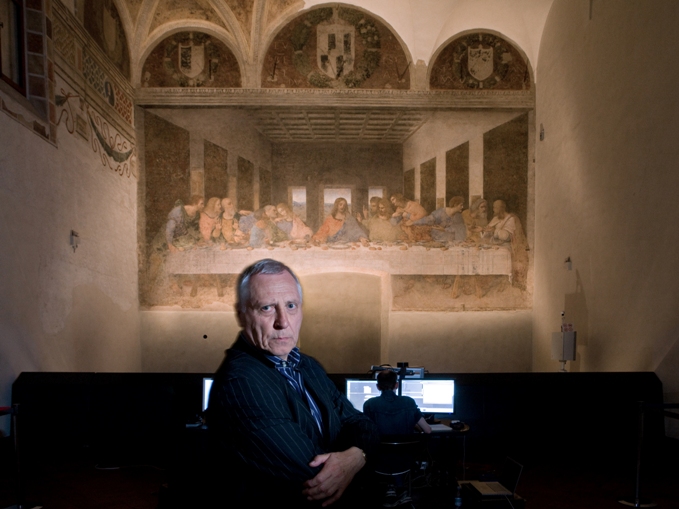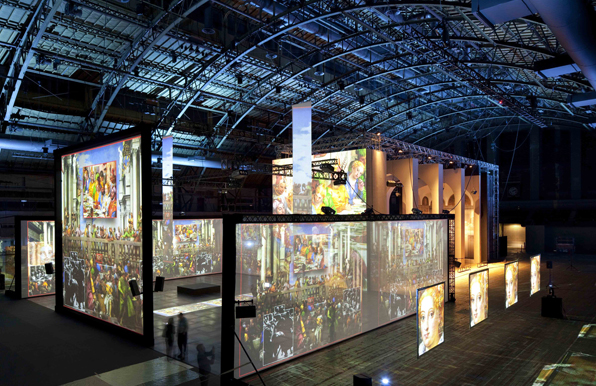
Peter Greenaway investigates da Vinci’s “Last Supper” and Veronese’s “Wedding at Cana” at Park Avenue Armory
Park Avenue Armory
643 Park Ave. at 67th St.
Tuesday – Sunday through January 6, timed tickets $15 (children ten and under free), 12 noon – 8:00 pm
212-933-5812
www.armoryonpark.org
On December 4 at the Park Avenue Armory, iconoclastic British director Peter Greenaway boldly declared that cinema is dead, that all art is elitist, and that we have become a visually illiterate society. The man behind such unique and unusual films as THE COOK, THE THIEF, HIS WIFE & HER LOVER (1989) and THE PILLOW BOOK (1996) was in New York discussing his dazzling multimedia installation “Leonardo’s Last Supper: A Vision by Peter Greenaway,” which continues through January 6 at the armory. Greenaway is in the midst of his Ten Classical Paintings Revisited series, in which he delves deep into the stories behind some of the greatest works of art in the history of the world. He began by turning Rembrandt’s “Nightwatch” into a thrilling murder mystery and has now turned his attention to Leonardo da Vinci and Paolo Veronese. Upon first entering the fifty-five-thousand square foot Wade Thompson Drill Hall, visitors are greeted by more than a dozen screens of varying sizes, dangling from the ceiling, hiding in the background, and even forming a red carpet of sorts on the floor. Different videos place the viewer in the midst of a Milan piazza as images of tourists whirl past. “I love Italian fascist architecture,” Greenaway noted during his December 4 talk.

The Park Avenue Armory is transformed into a multimedia Italian piazza and refectory for dazzling Greenaway installation (photo by James Ewing)
Following shots of Italian ballet dancer Roberto Bolle’s graceful movement, visitors are taken into a second room, a re-creation of the Refectory of Santa Maria Delle Grazie, featuring a long white table with white place settings leading to an exact copy of da Vinci’s masterful depiction of “The Last Supper.” Greenaway brings the magnificent painting to life using light, shadow, and projection as the work suddenly becomes three-dimensional, glows when hit by apparent sunlight, and is broken down into individual figures and specific elements. The standing audience is then brought back into the first room, where Greenaway investigates Veronese’s “Wedding at Cana,” a work that places Jesus at the center of a Jewish wedding, the married couple way off to one side, as Jesus turns water into wine. Greenaway discusses various characters Veronese included in the painting, his controversial depiction of blood, and the hierarchy of the carefully arranged 126 figures at the banquet, all of whom are given bits of dialogue, some taken from the Gospel of St. John. With voices coming from all directions and classical music by Andrea and Giovanni Gabrieli and Antonio Vivaldi echoing through the hall, visitors become guests at the wedding, as if in the middle of it all, as Greenaway offers a new way to look at a painting and cinema, just as he did with “The Last Supper.” The forty-five-minute presentation gets into cosmography, Christian iconography, and apocrypha with a sly sense of humor, integrating living images with a text-based cinema, incorporating art and architecture, film and dance, religion and history into a spectacular experience that should not be missed.